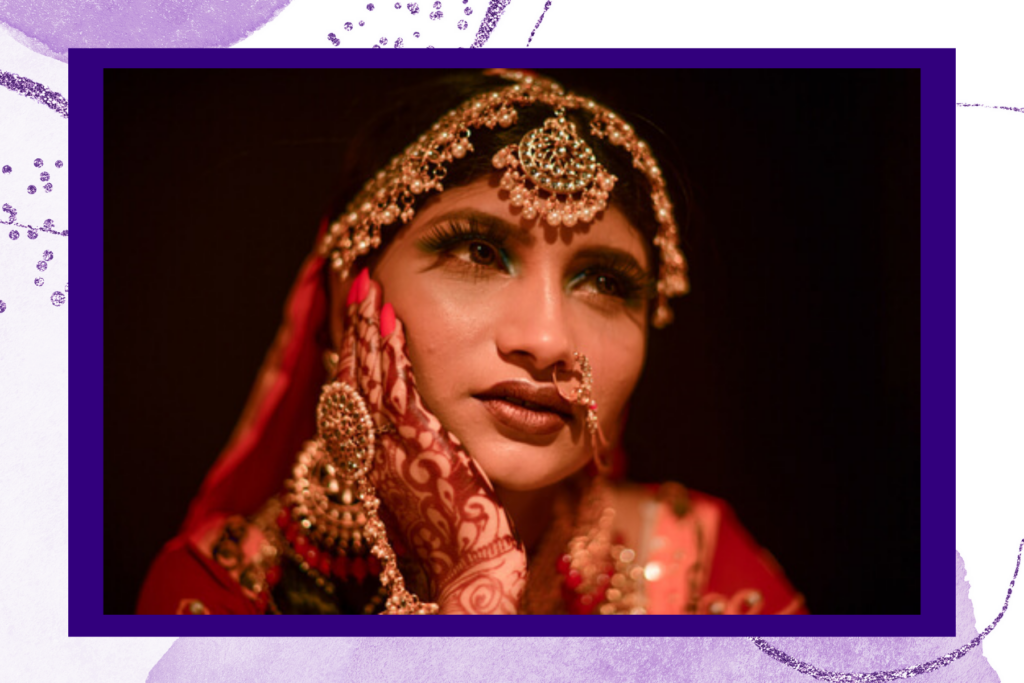
Photo by Aneesh Kotwal via Shutterstock.com
I’m the kind of person who will find any excuse to add desi elements to my outfit, be it jhumkas with dresses or kolhapuris with jeans. Most of the blouses, dresses, skirts and even some crop tops in my wardrobe flaunt Indian prints like Kalamkari, Ajrakh, Ikat etc., and I’ve always just thought of this as personal taste. But cultural influences in everyday attire can play a significant role in portraying pride in our heritage, normalising diversity in fashion while also giving one the edge of a personal style statement. But everyday commitments and living away from home countries can make it difficult to practice this on the regular. So dressing up in ethnic wear while celebrating festivities can be a fun way to remember our roots, rekindle fond memories, pass down traditions that evoke nostalgia and simply feel fabulous.
No matter the festival, be it Onam, Diwali or Holi, here’s how dressing up for them has become a way to carry a piece of home with me wherever I go:
Care for the tresses
View this post on Instagram
Growing up, every festival morning, my family would kick-start the celebrations by indulging in some self-care. It would begin with a soothing hair oil massage that was meant to stimulate hair growth. We would then wash off the oil using a natural blend of neem, hibiscus leaves, aloe vera and orange peel, which left the locks soft and luscious.
Traditionally, hair care has played a major role in Indian beauty regimens and a lot of these practices are inherently organic, natural and eco-friendly. Although I now try to make sustainable choices while purchasing shampoos and conditioners, I stick to this all-natural hair care routine on Diwali morning as an ode to the good ol’ days.
Six yards of elegance
View this post on Instagram
When it comes to putting together the look of the day, the star of the show is often the outfit itself. To me, festival attire and ethnic wear only means one thing — silk clothes! When I was younger, my mother often restitched her silk sarees into little silk skirts or pattu pavadai as it’s called in Tamil. This tradition has evolved into me raiding her wardrobe for a gorgeous Kanjeevaram silk saree to don on festival day. There’s something about silk that just exudes luxury, sophistication and elegance that I can’t pass up. And well, my mother’s impeccable taste might just be the icing on the cake.
[Read Related: 6 Conscious Brands to Check out for a Festive Diwali Dhamaka]
Silver jewellery
View this post on Instagram
I am a sucker for oxidised silver jewellery paired with ethnic wear. Although gold is often perceived to be the most popular metal of choice, I love the rustic touch that silver can add to an outfit. Silver jewellery is traditionally worn in Indian culture to represent the moon’s powers and act as a protection against black magic. It is meant to ward off negative emotions and improve one’s dreams.
Along with the added protection, I like the unique elegance that silver jewellery adds to any festive outfit.
Mehendi (or marudaani)
View this post on Instagram
This one is pure nostalgia for me. Every year, the day before a festival starts, I would wake up to the smell of fresh mehendi (or marudaani in Tamil) leaves being ground for application. Then, my grandmother would sit all the grandkids down and draw circles on our palms. They’d be filled with the freshly made henna covering the tips of our fingers front and back. As a child, the cooling sensation would make me giggle. It was a challenge to not stain my clothes till the mehendi had dried off!
Traditionally this is a ritual rooted in science. Mehendi has medicinal properties! It’s cooling nature lowers body temperature, soothes headaches and provides stress-relief. Of course, the lovely stain left behind looks stunning on any skin tone. Henna designs now include much more intricate patterns. But I still look forward to the simple, fresh and traditional design every festive season.
The bindi
View this post on Instagram
Lastly, a bindi on the forehead puts the finishing touches on any ethnic wear outfit and completes the look. In the Hindu religion, wearing a bindi is meant to act as a third eye to ward off evil.
[Read Related: Simple Steps to Celebrating a Sustainable Diwali This Year]
As an immigrant child with friends outside my culture, I used to find the practice of wearing a bindi irritating. Over time, a bindi has become something I willingly incorporate into everyday outfits, not as a symbol of spirituality but as a way in which to raise awareness about my culture. This way I can help destigmatize it.
All in all, getting dressed for a festival is a culmination of remembering my heritage, getting excited about my family heirlooms and, of course, a lot of masti with friends and family!




